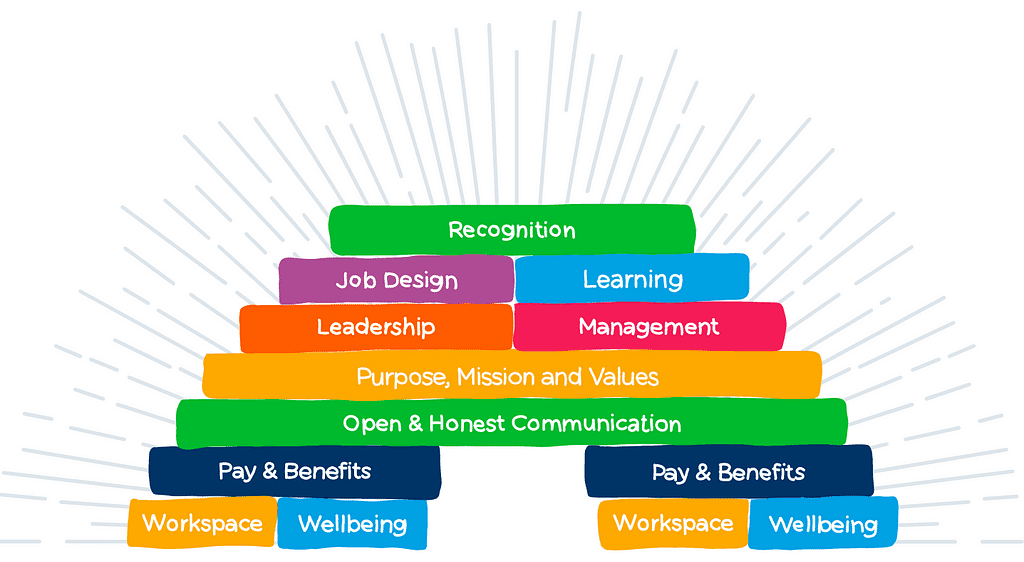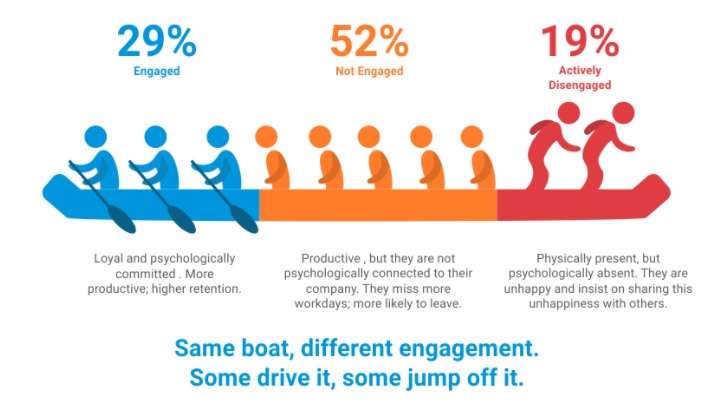
Employee engagement – understanding a unique management concept briefly
What is Employee Engagement?
Employee engagement is a workplace approach method. It is aimed to create the right conditions for all employees and members of an organization so they can all give their best daily, are committed to the goals and values of their organization, and motivated to contribute to an organization’s success with an amplified sense of their own well-being.

In short, it is about how an organization creates conditions where employees can offer more of their capability and potential.
Employee engagement for the layman- what is it basically?
When someone is asked to define engagement, they define it as a process where individuals are working on certain activities to fulfill certain tasks, to kill time and vice versa.
When they are asked what is employee engagement? They basically define it in colloquial terms as a way organizations positively engage their employees.
In honesty, many think of employee engagement as getting up each morning with the mindset of going to work, knowing what to do.
In such situations, employees often have worthwhile ideas and do their best to translate them into reality.
They often look forward to making their teams and others do a great job and help them do great as well.
Again, what is employee engagement? In honesty, it is about understanding the role of an individual employee in any organization. It is also about that employee being witnessed and motivated upon where they fit in an organization’s purpose and goals.
Employee engagement is also about having a clear understanding of the way an organization is fulfilling its goals and its purpose.
Moreover, it even describes how it is changing and evolving to fulfill those goals in an improved manner, giving a voice in the journey to offer ideas and expressing views that are taken into considerations as decisions are being made.
It is also about employees being included as a member of the team (not just on paper but in essence and spirit) helping them focus on clear objectives, trusting them, empowering them, asking them for regular and worthwhile feedback, supporting them in new skill development, thanking and appreciating them for their presence and efforts, along with recognizing them for their achievements.
Organizations who are fully engaged have values that are robust, authentic and unique. They even have fairness and trust based on mutual respect, where two-way promises and commitments are honored (and evident too).
Between employers and employees, such things are completed and understood by mutual cooperation.
What is employee engagement based on?
Employee engagement is based on integrity, trust, two-way commitment and communication between a company and its employees. This is an approach that raises the chances of a business’s success, thus contributing greatly to the performance of both employees and the company as well as their well-being and productivity.
Such a thing can be measured, as it varies from bad to great. It can be nurtured and raised considerably or it can be lost and shuttered. It would be wise to improve and raise it in the best possible manner.
Understanding employee engagement from an employer’s perspective
For employers, employee engagement is about having a positive attitude and behavior. This leads to improved business results, in a manner that they help trigger and reinforce one another.
It is also about employees feeling proud to work for their company and exhibiting loyalty when working for them. This in turn makes them advocates for the organization in front of both clientele, partners, customers, users and authorities alike. They can go even the extra mile to complete certain tasks.
The same phenomenon is also about utilizing knowledge of employees in a cooperative manner into creation of ideas that improve products and services completely. Moreover, it also innovates an organization’s working methods, operations and processes.

Employee engagement is also about drawing out a deeper commitment from employees. This helps in reduction of employee absences, proper utilization of sick leaves and other leaves, accidents decline, reduction of grievances and conflicts, leading to improvement in productivity.
Moreover, organizational actions that are consistent with its own values, fulfilling kept promises and explaining why some promises weren’t fulfilled help define engagement in broader terms, in context of the above phenomenon.
What are the best practices of employee engagement?
In what ways can organizations evaluate their existing levels of employee engagement, define engagement on a new level and continue to grow it? Here are some best practices that can work quite well:
- Using surveys and questionnaires in gauging feelings and opinions of employees.
- Paying attention and exhibiting the organization is listening to employees first before taking any action.
- Encouraging the employees to speak up and facilitating their communication channels.
- Recognizing learning styles of employees and their preferences.
- Using group learning strategies instead of imparting knowledge blandly.
- Forming small groups.
- Having employee groups focusing on narrow and specific tasks.
These engagement strategies require companies to think from a wider perspective. Everyone should be reminded that businesses and organizations are communities starting with them, along with the managers. Work of employees will be acknowledged. Communities flourish when everyone is included, trusted and valued.
What does not comprise employee engagement?
Employee engagement is a phenomenon, a process and a method that cannot be achieved using a mechanistic approach. This basically extracts discretionary effort by manipulating the commitment of employees as well as their emotions.
This eventually gets exposed, which can disillusion and disaffect employees. In fact, they can even become cynical and critical of the organization too.




